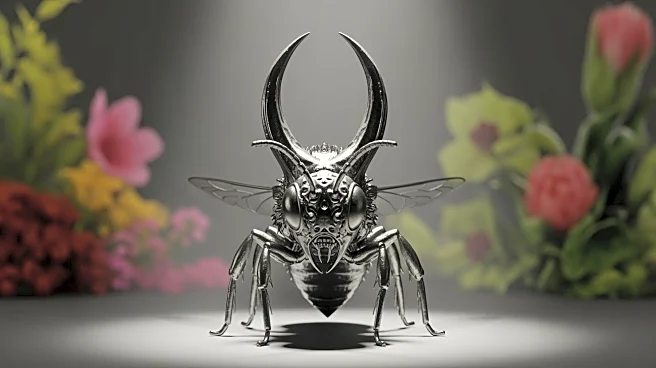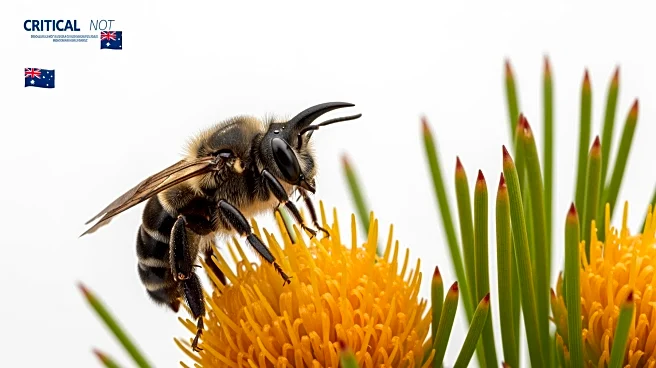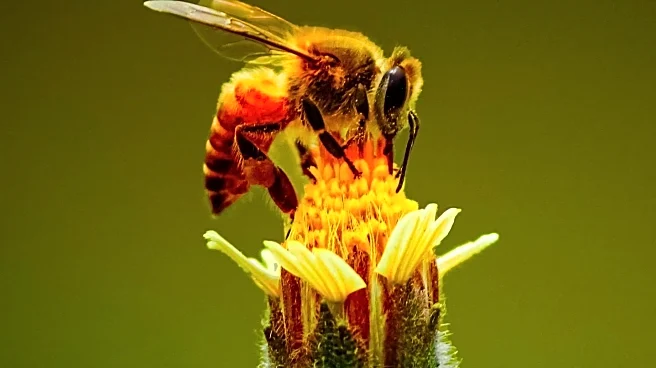What's Happening?
Scientists have discovered a new bee species, Megachile lucifer, in Western Australia, characterized by distinctive horn-like features on female bees. The discovery was made during a survey of a critically
endangered wildflower in the Goldfields region. The species is named after the Netflix character Lucifer, reflecting the horned appearance. This marks the first new bee species described in over 20 years, emphasizing the importance of studying native species in vulnerable habitats.
Why It's Important?
The discovery of Megachile lucifer underscores the critical need for conservation efforts in regions susceptible to habitat disturbance, such as mining. Native bees play essential roles in pollination and ecosystem support, and identifying new species is vital for understanding biodiversity. The study highlights the potential risks of losing undiscovered species due to environmental changes, stressing the importance of comprehensive ecological surveys.
What's Next?
Further research is needed to understand the ecological role of Megachile lucifer and its interactions within its habitat. Conservationists may push for more stringent environmental protections in the Goldfields region to safeguard native species. The discovery could lead to increased funding and interest in studying Australia's native bees, potentially influencing policy decisions regarding land use and conservation.
Beyond the Headlines
The naming of Megachile lucifer reflects cultural influences on scientific nomenclature, showcasing the intersection of popular culture and scientific discovery. The study raises ethical considerations about the impact of human activities on biodiversity and the responsibility to protect vulnerable ecosystems. It also highlights the ongoing challenges in cataloging and preserving native species amid climate change and industrial pressures.











